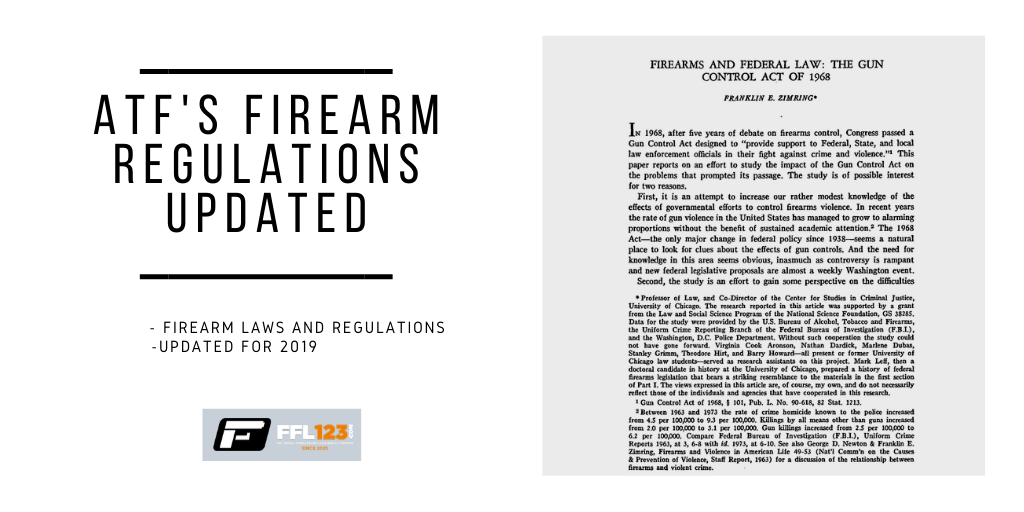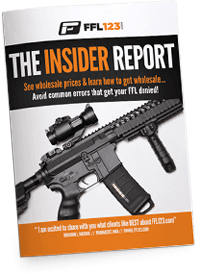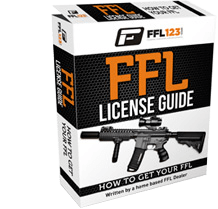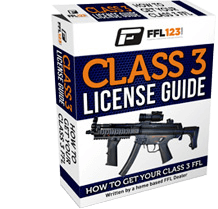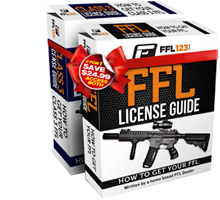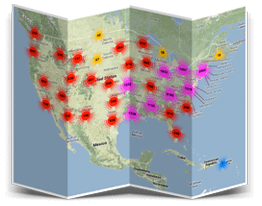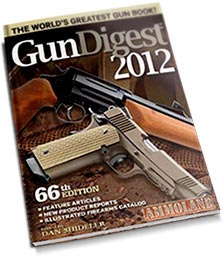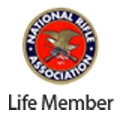From time to time, the ATF publishes the Federal Firearms Regulations Reference Guide. Because most Federal gun laws are fortunately fairly static and unchanging for the moment, this invaluable reference guide rarely gets updated by the ATF. Of course there are tweaks to laws, and more importantly ongoing ATF rulemaking changes. Because most changes in gun regulations happens at a rule making level within the ATF, and those rules can change without little advance warning depending on who is interpreting what that day, the Federal Firearms Regulation Guide serves more as a solid foundation for FFL holders.
Along with the guide, FFL’s need to be aware of changing rules, interpretations of existing law and regulation, and even important court cases that can change how Federal law is enforced or interpreted. It simply isn’t worthwhile to update the reference guide on an annual basis, but many FFL’s may feel left in the dark when it comes to up to the minute news.
Now some people have made their own fake “2018” or “revised” Federal Firearms Regulations Reference Guide, but these are unofficial and are not a real government document. Instead they are selling you what you can download for free, and have tacked some current info you can already get from the ATF.
Now there have been some very important changes since 2014 that are worth mentioning, and all FFL holders should be paying attention to the updates, bulletins and notifications that the ATF puts out. But sometimes it’s easy to miss some of that, so we will recap some of the most important changes in firearms regulation since 2014, and then tell you how you can keep up with the regulations in the future.
Table of Contents
Bump Stocks
This is one of the big changes in Federal firearms regulation. Under the Obama administration, bump stocks were correctly regulated as “not a machine gun” as they only served as a way to make it easier to loosely hang on to a semi-auto rifle and simulate to some degree full auto fire. A gun owner with a little practice can accomplish the same thing simply based on how they hold their rifle, so these stocks were mostly seen as gimmicks and range toys for wasting ammo and mostly missing your target.
However, after the 2017 Las Vegas shooting which included rifles fitted with bump stocks, a panic swept the nation, and calls to ban them came from the White House on down. Even though there is no evidence that such devices were used by the killer, or that if used they would have aided him, the ATF was eventually pressured into changing their previous rule on bumpstocks, and declared them an illegal machine gun part.
This is a classic example of the ATF reversing a previous decision while also destroying an entire industry at the same time. It is important for gun owners and FFL holders to pay close attention to the way the ATF can simply rewrite rules when ordered to, even when they had previously decided a device or type of firearm was legal. There is often little or no practical recourse for when the ATF reverses decisions, and in this case, bumpstocks weren’t even grandfathered in, nor were owners compensated for their loss even though they were purchased in good faith.
In the case of bump stocks, the ATF had a token period of public input, and then published the amended rule after they approved it. This sort of rule making as a substitute for legislation is part of the Gun Control Act of 1968, which allows the ATF unusually broad authority in interpreting and enforcing GCA 68 and related laws.
NFA Purchases
The way NFA purchases have been handled has changed in recent years as well, after the ATF approved Final Rule 41F in January of 2016.
41F was very controversial among gun owners, as it added additional background check and paperwork burdens for persons purchasing an NFA item with a trust or corporation. Previously, a trust had been the best way to purchase an NFA item without getting a local Chief Law Enforcement Officer (CLEO) to sign off on the application. Because only purchases made as an individual require that sign off, trusts became a popular way to buy NFA items when CLEO’s would not sign off. They are also an easy way to allow family and close friends legal access to an NFA item.
41F modified that by requiring that each NFA item purchased by or added to a trust would require pretty much all people on the trust to submit a set of fingerprint cards and background check information as part of the transfer or purchase process. So if you have five people on your trust, you the owner, plus the five people on it might have to submit the same background check paperwork, and a form notifying your CLEO of the purchase.
Officially this was done to make sure all persons on the trust underwent the same background checks as the purchaser, although there was no evidence NFA trusts were being used to give prohibited persons access to NFA items. 41F had the result of increasing wait times for NFA purchases due to the extra paperwork and processing required.
Understanding 41F can be very complicated, even with ATF guidance (PDF download) but FFL123 customers have exclusive access to our staff of industry insiders who can walk you through even the most difficult questions or just explain what the latest proposed rule might mean to you.
41F generally increased the hassle and workload for NFA registrations to trusts and corporations. However there is a small silver lining, inasmuch as it also did away with the obsolete 1930’s requirement of CLEO approval for a purchase for individuals. Not only does this stop anti-gun CLEO’s from preventing law abiding Americans from buying an NFA item, it also recognizes that we don’t like in a Dick Tracy world of decentralized criminal records anymore.
Pistol Braces
We probably are all familiar with various pistol stabilizing braces. Popular on AR style pistols, and various other pistol platforms based off rifles or semi-auto variants of various submachine guns, these braces address the very real need to sometimes balance or brace these ungainly guns. Usually used to support the back of a pistol on the wrist or forearm, stabilizing braces can sometimes be used as an improvised stock, which created a lot of controversy.
At first the ATF decided that incidental or casual use of a brace as a stock was legal, as they were not manufactured as buttstocks. Later on, they reversed themselves, and then changed their mind again. This back and forth dance happened over a period of about three years, and we are back to where we started – pistol braces are not stocks.
However, the ATF still lacks consistency with their own rules. In 2018, they charged a man in Ohio with ownership of an unregistered NFA item because his AR style pistol was fitted with a stabilizing brace and a angled foregrip – both of which had been approved by the ATF for use on pistols. The man was found not guilty, but it shows how the left and right hands of the ATF don’t seem to know what the other is doing.
Further related to pistol braces, the ATF has rewritten rules on measuring overall length of weapons fitted with a brace and vertical foregrip. Previously, the added length of a brace could count towards overall length, which is an important consideration when building some configurations of “firearms” – that strange classification which is not a rifle, shotgun or short barrel variant thereof. By disallowing the length of a brace on certain guns fitted with vertical foregrips, those guns might become illegal NFA items.
As you can see, a simple accessory like a pistol stabilizing brace has created huge amounts of controversy, paperwork and even legal action and can be very confusing to follow, and even create unintended legal consequences for people who believed they were acting within the law!
Keeping Up-To-Date
So if the ATF only publishes the Federal Firearms Regulations Reference every few years, how is an FFL or gun owner to keep up with whatever whims of government might affect them? Well, you can wait to have an angry ATF agent tell you how badly you screwed up by not paying attention, but that’s a pretty bad way to go about things.
The ATF does publish a regular list of updates, rules making proposals and changes, and other important information. However unless you go back multiple years you may miss important things. That of course is a perfectly valid approach, but you’ll probably want to print and save anything of use to your business or interests. They also will email or send you their latest bulletins and information, and your local ATF agent should also be able to provide you with any regulations material you require.
Another way to keep up to date with changes since the last Federal Firearms Regulation Reference is through industry advocacy and interest groups like The National Shooting Sports Foundation since they work hard to keep their members and the general public well informed of what is going on with ATF rules and regulations. Many state level gun rights organizations also keep their members well informed on current ATF activity, along with anything that might impact them at state or local levels. And of course a good firearms attorney is worth their weight in gold…
FFL123 customers have a unique advantage. We don’t stop supporting you once you get your FFL. In fact every FFL123 customer has ongoing access to our unique industry insider support forums, newsletters and customized support.
In other words if you’ve heard a rumor, or have a question, or the ATF has published a new rule, or is thinking about one, we will help you understand what is going on and how it affects your business. Always keep and study a copy of the regulations, as well as all ATF bulletins and updates, and then use the powerful resources of FFL123 to help you understand exactly what you need to know.
Conclusion
Federal gun laws, ATF rules and regulations and how they are interpreted can be very confusing, and contradictory. Some of them can change based on political whims, or people within the ATF simply not being able to make up their minds as to what applies in a given situation.
For FFL’s and law abiding Americans, this confusion can have serious consequences if they misread a regulation, or the ATF decides one day to simply outlaw a broad swath of previously legal firearms accessories.
Relying just on a five year old guide to firearms regulations isn’t enough. Unofficial updates out there don’t provide all the answers, and combing through ATF notifications for the last few years might lead to missing something important.
The clever FFL uses all the resources available to them. They keep current on ATF publications, are active with industry and rights advocacy groups, and pays attention to proposed rule making and published changes.
FFL123 customers can also rely on our customized support and members only forums to get further information and help about confusing or new Federal regulation.
FFL123 is dedicated to making sure our customers are aware of proposed legislation, rules changes and other legal matters that might impact them. It is part of our lifetime support commitment to our valued customers, and provides value beyond our popular FFL application kit. If you are an FFL123 customer and have questions about Federal firearms laws or regulations, just ask! If you are thinking about getting an FFL, there is no better time than the present. Choose the kit that is right for you, and rest easy knowing you’ll get support during, and after the application process for as long as you need it!




